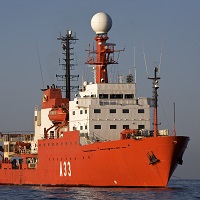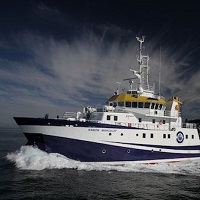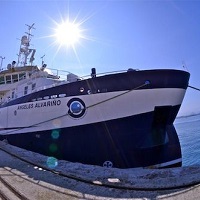Keyword
atmospheric radiometers
4 record(s)
Type of resources
Categories
Topics
INSPIRE themes
Keywords
Contact for the resource
Provided by
Years
Formats
Status
-

FICARAM cruise aims to investigate the evolution of decadal anthropogenic carbon and to evaluate the CO2 uptake capacity in the sector South Atlantic Ocean and its spread to Ecuador and Nord-tropical zone. The section of this cruise is a repeat section following the trace made in 1994 by IFREMER (Laboratoire de Physique des Oceans) into the French project CITHER as a WOCE (http://wwz.ifremer.fr/lpo/Moyens-a-la-mer/Les-campagnes-a-la-mer/Cither-2). This section was repeated in 2001 and 2002 by the Oceanology Group of the Instituto de Investigaciones Marinas of CSIC as part of CAVASSO and CARBOOCEAN European projects. This section is part of the international programs GOSHIP (http://www.go-ship.org/CruisePlans.html) and IOPCC. These programs allow the coordination between the various activities in the global ocean (http://www.go-ship.org/RefSecs/GOSHIPMap_April2011.pdf). The objectives of this cruise are framed in the EU FP7 project CARBOCHANGE (http://carbochange.b.uib.no/) under grant agreement nº 264879. Another important component of FICARAM cruise aims examine the biological and biogeochemical mechanisms that hinder total dissolved organic carbon (DOC) remineralisation in marine systems, taking a multidisciplinary perspective and applying many different approaches. This objective is the global objective of the Spanish project DOREMI that join this FICARAM cruise. Along the section, the DOREMI project will test the effect of different factors (carbon and nutrient additions, and microbial structure) on DOC degradation in epipelagic, mesopelagic and deep waters, developing some experiments determining the potential degradability of mesopelagic and epipelagic DOM, and the role that labile C supplements plays regulating this process and by the microbial structure.
-

The main objetive of PLOCAN1304 cruise is twofold. On the one hand implement PLOCAN testing bank area, located in NE coast of Gran Canaria island, and on the other hand, doing seasonal sampling of ESTOC (Estacion de Series Temporales Oceánias de Canarias), which represents PLOCAN node oceanic observatory, located 60 nautical miles north of Gran Canaria island.
-

The main objetive of PLOCAN1310 cruise is twofold. On the one hand implement PLOCAN testing bank area, located in NE coast of Gran Canaria island, and on the other hand, doing seasonal sampling of ESTOC (Estacion de Series Temporales Oceánias de Canarias), which represents PLOCAN node oceanic observatory, located 60 nautical miles north of Gran Canaria island. Hydrological and Geophisical sampling at NER300 area.
-

The main objectives for the MedSeA cruise are to: - Refine climatological maps of carbonate species distribution (pH, pCO2, CO32-, CT, AT, CaCO3 saturation states), along with their isotopic signatures, in the Mediterranean Sea. - Report on the determination of the anthropogenic carbon distribution throughout the whole Mediterranean Sea and its associated uncertainty estimate - Determine the effects of carbonate chemistry on Mediterranean calcifying and non-calcifying planktonic organisms. - Determine synergistic effects of acidification, warming and nutrients on key pelagic organisms. - Identify and quantify responses of fundamental Mediterranean biogeochemical processes to acidification and warming. - MedSeA is carried out in collaboration with the Geotraces program in order to collect water for chemical large volume trace elements and isotopes such as Th/Pa, Artificial radionuclides, Th-234, Nd-isotopes and Ra.
 Catálogo de datos del IEO
Catálogo de datos del IEO